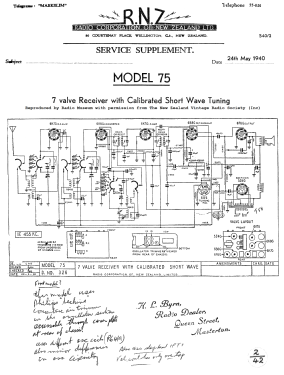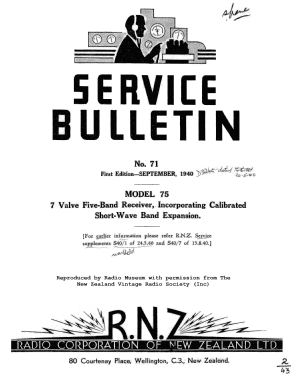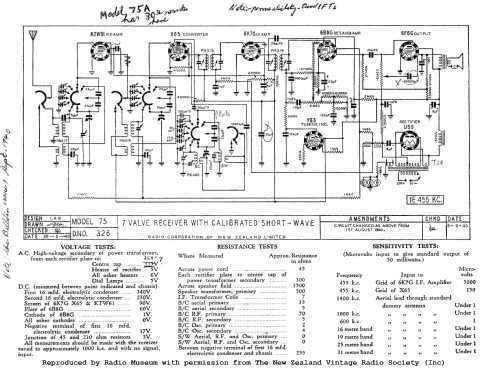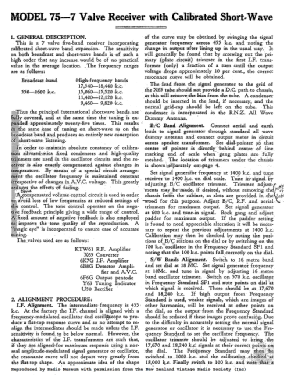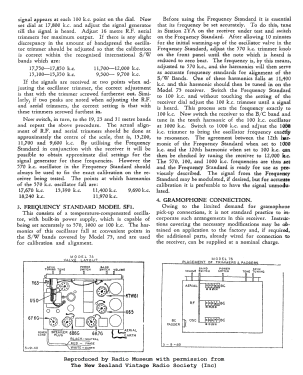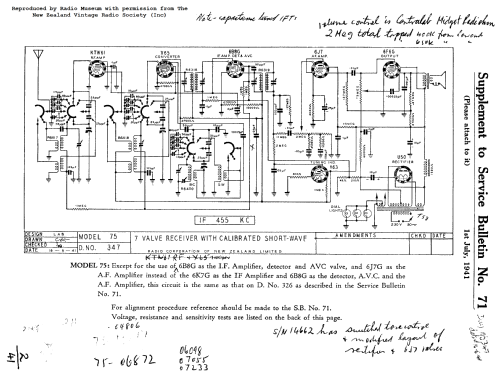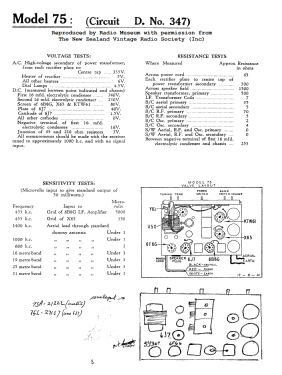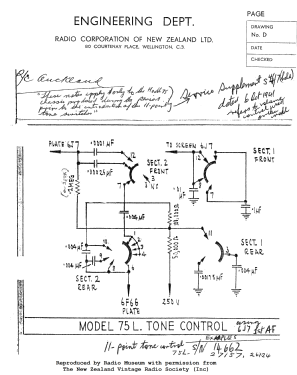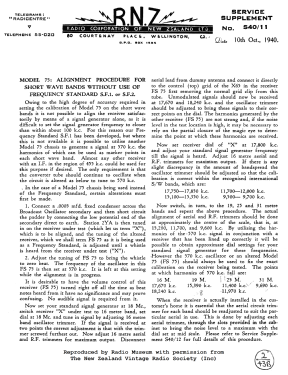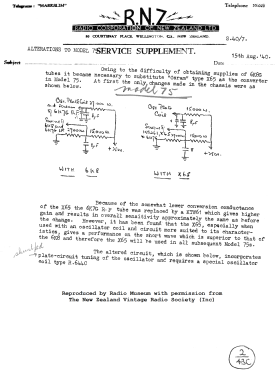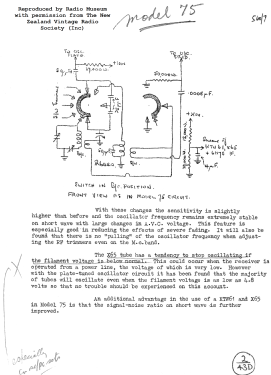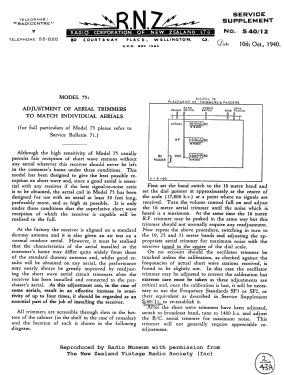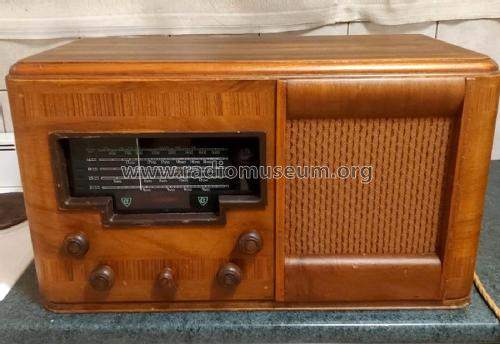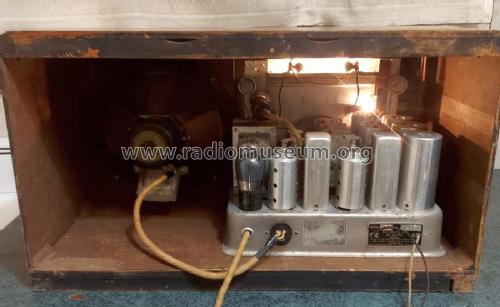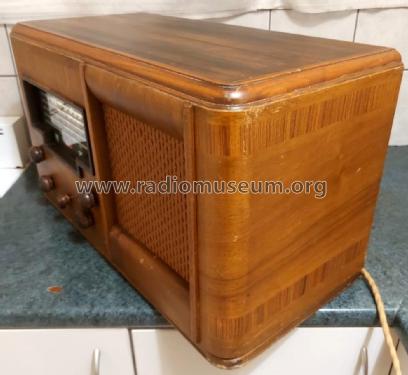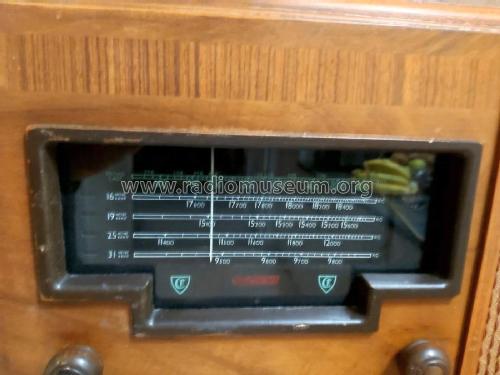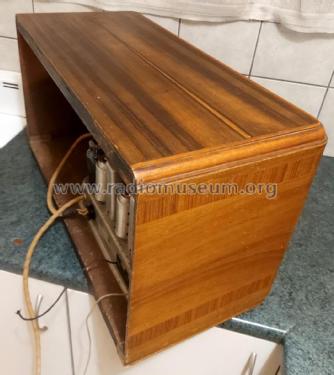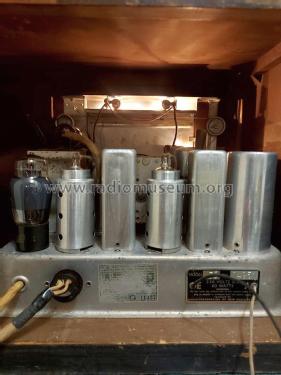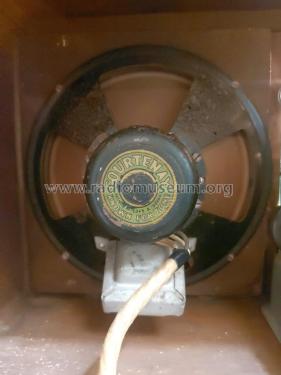Super Defiant 75
Courtenay (Brand); Various manufacturers
- Country
- New Zealand-Aotearoa
- Manufacturer / Brand
- Courtenay (Brand); Various manufacturers
- Year
- 1940
- Category
- Broadcast Receiver - or past WW2 Tuner
- Radiomuseum.org ID
- 347321
Click on the schematic thumbnail to request the schematic as a free document.
- Number of Tubes
- 7
- Main principle
- Superhet with RF-stage; ZF/IF 455 kHz; 2 AF stage(s)
- Tuned circuits
- 7 AM circuit(s)
- Wave bands
- Broadcast plus more than 2 Short Wave bands.
- Power type and voltage
- Alternating Current supply (AC) / 230 Volt
- Loudspeaker
- Electro Magnetic Dynamic LS (moving-coil with field excitation coil) / Ø 10 inch = 25.4 cm
- Material
- Wooden case
- from Radiomuseum.org
- Model: Super Defiant 75 - Courtenay Brand; Various
- Shape
- Tablemodel, low profile (big size).
- Dimensions (WHD)
- 24.25 x 13.5 x 11.5 inch / 616 x 343 x 292 mm
- Notes
-
5 band superhet with RF stage table model receiver with full bandspread calibrated shortwave tuning.
- 550 - 1.600 kHz broadcast
- 17.540 - 18.440 kHz 16 metre band
- 15.060 - 15.520 kHz 19 metre band
- 11.400 - 12.120 kHz 25 metre band
- 9.460 - 9.820 kHz 31 metre band
60 W power consumption.
7-Valve (including magic eye) superhet with RF stage.
The original valve line up was changed within a few months and then changed again the following year (1941). The valve line ups used were:
- 6K7G 6K8G 6K7G 6B8G 6U5 6F6G 5Z4G.
- KTW61 X65 6K7G 6B8G Y63 6F6G U50.
- KTW61 X65 6B8G 6J7 Y63 6F6G U50.
The Courtenay 75 and Columbus 75 are believed to be the first domestic bandspread receivers in the world after the RCA HF2/HF4.
See also Courtenay Model 75A and Columbus 75.
Manufactured by Radio Corporation Of New Zealand Ltd for Turnbull & Jones Ltd.
- Mentioned in
- The Golden Age of Radio in the Home 1986 (Page 66)
- Author
- Model page created by Brian Stevens. See "Data change" for further contributors.
- Other Models
-
Here you find 73 models, 61 with images and 66 with schematics for wireless sets etc. In French: TSF for Télégraphie sans fil.
All listed radios etc. from Courtenay (Brand); Various manufacturers
